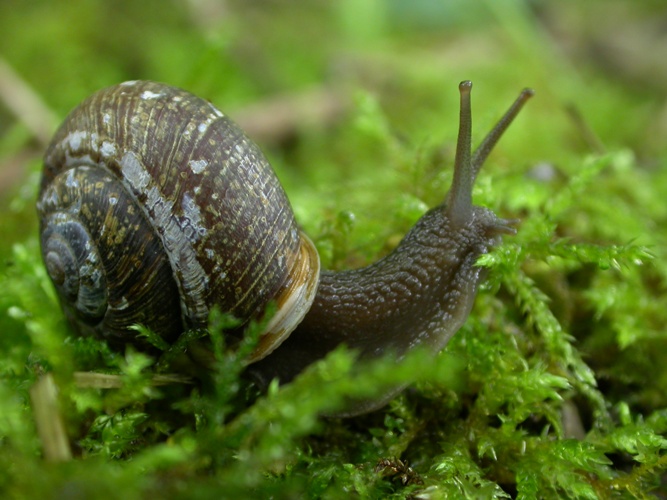
Classification
 The classification of
Allogona townsendiana commonly known as the
Oregon Forestsnail is as follows:
The classification of
Allogona townsendiana commonly known as the
Oregon Forestsnail is as follows:
Domain: Eukarya
Kingdom: Animalia
Phylum: Mollusca
Class: Gastropoda
Order: Pulmonata
Family: Polygyridae
Genus: Allogona
Species: Allogona townsendiana
Allogona townsendiana is the snail’s scientific name, which is
usually in either Latin or Greek. This system is used as a universal
code for identifying snails all over the world. Allogona is
translated from Greek to mean ‘different genitalia’ while
townsendiana is named after John K. Townsend (Evergreen,
2008). The common
name originated due to the fact that the snail is typically found in
forests specifically in western Oregon and Washington as well as
north into southwestern British Columbia.
Allogona
townsendiana is classified in the Domain Eukarya due to the fact
that it possesses attributes such as an internal membranous system,
mitochondria, and the presence of organelles. The most important
characteristic being that it is multicellular (Hickman et al. 2009).
The Oregon
Forestsnail is classified in the Animal kingdom because it is a heterotrophic organism that most likely consumes plants and fungi
for food. The snail reproduces sexually and is in fact
hermaphroditic, and lastly organisms in this kingdom have cells that
lack cell walls (Hickman et al. 2009).
Furthermore,
the snail is classified in the Phylum Mollusca due to the fact that
it has a mantle that secretes the shell and a ventral muscular food,
which used for swimming, crawling, or burrowing (Hickman et al.
2009).
This snail is
classified in the Class Gastropoda, which translates to mean
“stomach-foot.” Due to the fact that it possesses a radula that is
used for scraping algae from surfaces and the shell consists of
three layers made of calcium carbonate (Leonard, 1959). Gastropods
are also identified by the process known as torsion, which is a 180°
rotation of the internal organs and results in the anus being
positioned above the snail’s head. This can cause a serious fouling
problem for many snails.
Allogona
townsendiana is found in the Order Pulmonata due to the fact that
within the mantle cavity a lung has developed and replaced the
gills. Pulmonates also possess one or two pairs of tentacles on
which the olfactory organs are located (Leonard, 1959).
A
characteristic that identifies the Oregon Forestsnail in the Family
Polygyridae is that it is a terrestrial and therefore an
air-breathing snail. Also, they have the ability to retract their
entire body into their shell (Hickman et al. 2009).
Characteristics that classify Allogona townsendiana in the Genus
Allogona are its shell width, which ranges from 21 to 31
millimeters, as well as the shell surface which is malleated
(Living Landscapes).
The characteristics that this particular snail possesses are
specific to the habitat it thrives in.